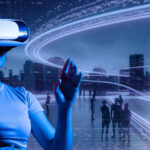
The digital branding landscape is evolving at lightning speed. As businesses compete for consumer attention, traditional marketing methods are no longer enough. Enter holograms, augmented reality (AR), and immersive experiences—the future of branding.
From interactive AR shopping to holographic brand ambassadors, these technologies are redefining how brands engage with customers. But how do they work, and what’s next? Let’s dive in.
🔮 The Rise of Holograms & AR in Branding
1️⃣ Holographic Branding: Beyond the Screen
Holograms bring 3D, interactive visuals into the real world, making brand experiences more immersive.
✅ Holographic Ads – Brands use 3D holographic billboards and displays to capture consumer attention.
✅ Virtual Influencers & Brand Ambassadors – Companies like KFC (Colonel Sanders AI), Lil Miquela, and Samsung’s NEON avatars use AI-powered holograms to engage audiences.
✅ Retail & Event Activations – Holograms allow brands to present life-sized product demos, fashion shows, or virtual speakers at trade shows and pop-up events.
🚀 Example: H&M used holograms in London to replace mannequins with lifelike, moving models wearing their latest fashion collection.
2️⃣ Augmented Reality (AR): Enhancing Digital Interaction
Unlike VR, which requires headsets, AR overlays digital elements onto the real world using smartphones, tablets, or AR glasses.
✅ Virtual Try-Ons & Product Previews
Brands like Sephora, IKEA, and Nike use AR to let customers visualize products before purchase.
🔹 Sephora’s Virtual Artist lets users try on makeup.
🔹 IKEA Place shows how furniture fits in real spaces.
✅ AR-Enabled Packaging & Branding
🔹 Brands use AR on product packaging to offer interactive storytelling.
🔹 Pepsi’s AR bus stop campaign surprised commuters with lifelike 3D animations, creating viral buzz.
🚀 Example: Coca-Cola launched AR-enabled vending machines where users could interact with brand mascots before making a purchase.
🔗 What’s Next? Future Trends in AR & Holographic Branding
🚀 1️⃣ AI-Powered Holographic Customer Service – Imagine walking into a store and being greeted by a holographic assistant that remembers your preferences.
🚀 2️⃣ AR Shopping with Smart Glasses – As AR glasses (like Apple Vision Pro) go mainstream, virtual storefronts will merge with real-world shopping.
🚀 3️⃣ Immersive Brand Metaverses – Brands will build entire virtual worlds where customers can explore, shop, and interact with products.
🚀 4️⃣ Personalized Holographic Ads – AI will customize holographic ads based on a consumer’s location, preferences, and browsing history.
💡 Final Thoughts: Are Brands Ready for the Future?
Holograms and AR are no longer sci-fi—they’re transforming branding today. Companies that embrace immersive experiences will captivate audiences and stay ahead of the competition.
🔹 The future of branding isn’t just digital; it’s interactive, immersive, and unforgettable. 🚀✨
So, is your brand ready for the next evolution?




